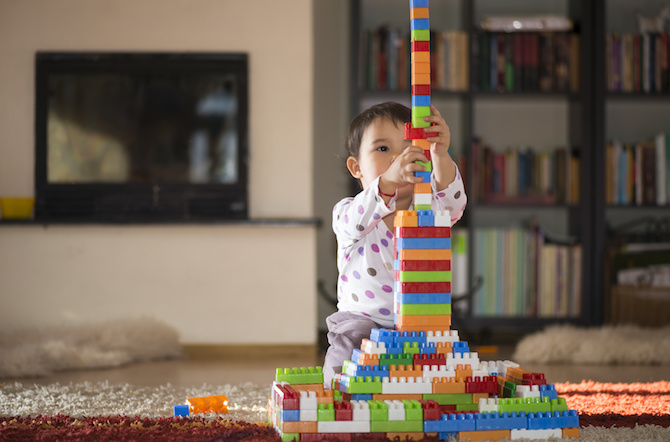Why are doctors prescribing play?

If you want to make sure that your child succeeds, make sure that they … play.
The job of children, according to the American Academy of Pediatrics (AAP), is to play. In fact, the AAP has a policy statement about the importance and power of play — and encourages pediatricians to do everything they can to get children to play — even writing prescriptions for it.
We tend to think of play as “extra,” as something to do only when there isn’t something better to do. But research shows that play itself is important.
Benefits of play in young children
- Brings parents and children together
- Promotes safe, stable, nurturing relationships
- Stimulates child development, by creating “serve and return” interactions that are crucial in the early years of life. These back-and-forth interactions between child and caregiver literally make nerves in the brain grow and connect.
As children grow, play teaches an important skill set called “executive function.” These are skills like organization, trouble-shooting, short-term memory, negotiation, collaboration, and self-regulation. You can think of them like the “air-traffic controller” skills of behavior: they make it possible for us to prioritize and set goals, and control our impulses and distractions so that we can achieve those goals. They also make it possible for us to work together — and navigate difficult situations by ourselves or with others.
As with most skills, executive function skills need to be practiced. In play, especially play that children decide and direct themselves, children get to try out and practice these skills. Without play, they don’t get to practice — and may never learn them at all.
Through play, children learn social skills. They learn to amuse themselves, to use their imagination, to create. When we stress academics over everything, and when we schedule children with back-to-back activities, they lose their ability to play — and in doing so, lose the chance to learn and practice much of what they need to succeed in life.
There are many different kinds of play, and all of them are important.
Types of play
- Object play. That’s when a child plays with something, like a doll or a car, creating their own stories and fun.
- Physical play, including rough-and-tumble play. Through this play, children get exercise, learn safe boundaries of activity, learn to interact with peers, and build not just their bodies, but relationships.
- Outdoor play. This, too, encourages exercise — and gets children outdoors, away from screens, in the sun, and helps them interact and learn about their physical environment.
- Social play. Through social play, children learn about friendships, collaboration, negotiation, taking turns, and everything else you need to live and work with other people.
- Pretend play, alone or with others. This is a type of play that is getting increasingly lost, as screens play an increasing role and play is often structured. Pretend play can be very powerful, allowing children to try on different roles, imagine and practice situations — and think of themselves as powerful, and the world as full of possibilities.
Requirements for effective play
- There has to be time for it. That sounds obvious, but the sad truth is that many children, especially school-aged children, have very little unscheduled time during which they can play.
- It has to be self-directed. You can provide the space, the friends, and the toys, but after that, it should be up to children as to what they do.
Childhood has changed. In my (largely free-range) childhood, my friends and I played pretend games for hours, roaming through the neighborhood, in backyards and trees. We took on different roles and personalities, changing them up mid-game sometimes. We went to the beach at low tide and raced boats through little rivers in the sand. My sister and I built dollhouses out of boxes and spent hours creating families and stories full of drama and intrigue. We drew and painted, we played hopscotch, hide-and-seek, and all sorts of other games with children in the neighborhood.
For many reasons, that’s not typical anymore. Childhood is much more scheduled, more achievement-oriented, and more oriented around screens — and while there are some benefits to this, they do not outweigh the benefits of unscheduled time and imaginative, interactive play.
We can make changes back, if we try. We can skip some activities, get out the paint and paper, buy some blocks or other toys without instructions, shut off the screens (including our phones), find outdoor spaces, take a deep breath … and let our children play.
Get answers to other health and parenting questions.
About our blogger: Dr. Claire McCarthy is a primary care pediatrician at Boston Children’s Hospital, an assistant professor of pediatrics at Harvard Medical School, a senior editor for Harvard Health Publications and an official spokesperson for the American Academy of Pediatrics.
Related Posts :
-

Team spirit: How working with an allergy psychologist got Amber back to cheering
A bubbly high schooler with lots of friends and a passion for competitive cheerleading: On the surface, Amber’s life ...
-

Reversing the trend: Easing the mental health boarding crisis in emergency rooms
Anxiety, depression, and suicide attempts have been rising over the past decade, especially among teens, often landing them in emergency ...
-

Rethinking cerebral arachnoid cysts through genomics
Cerebral arachnoid cysts are the most common mass-occupying brain lesion in humans. Some cause no noticeable symptoms and may just ...
-

Decades in the making: JR’s journey with craniofacial care
Last fall, JR Foley posted on Facebook to thank members of the Craniofacial Program at Boston Children’s Hospital for ...





